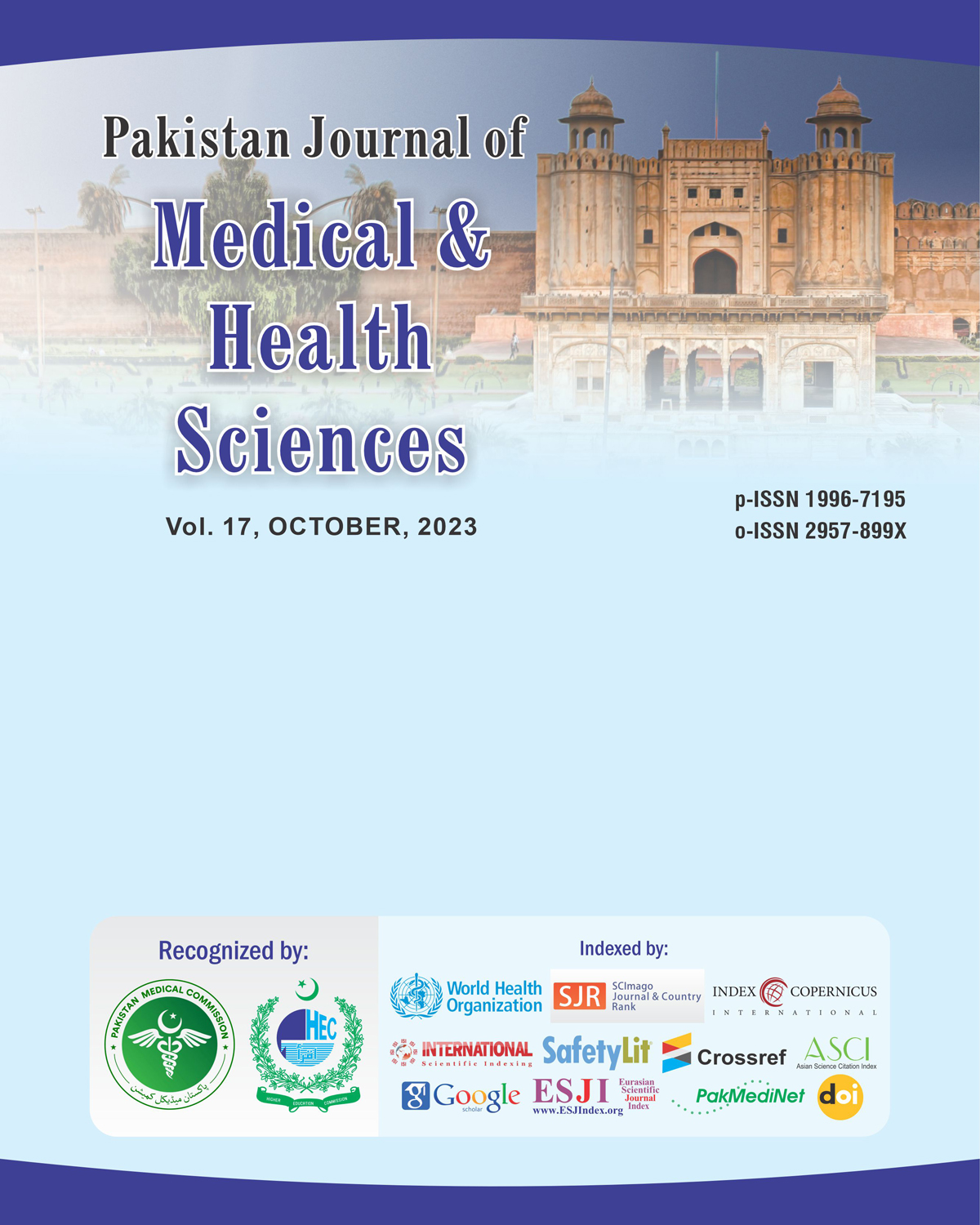Diagnostic Accuracy of Pelvic MRI in the Detection and Characterization of Uterine Fibroids: A Cross-Sectional Study
DOI:
https://doi.org/10.53350/pjmhs20231710172Abstract
Background: Accurate mapping of uterine fibroids is pivotal for selecting the least invasive, fertility-preserving therapy. Ultrasonography, although first-line in Pakistan, is often limited by obesity, distorted uterine anatomy, and operator dependence. Pelvic magnetic resonance imaging (MRI) offers superior tissue contrast, yet local performance data are sparse.
Objective: To determine the diagnostic accuracy of 1.5 T pelvic MRI for detecting and characterising uterine fibroids in Pakistani women and to examine how MRI-derived topology correlates with presenting symptoms and influences surgical planning.
Methodology: This cross-sectional study was conducted from June 2022 to July 2023 and enrolled 75 women presenting with clinical suspicion of uterine fibroids. Standardized pelvic MRI scans were performed at District Headquarter Hospital, Chiniot, and Sheikh Zayed Medical College & Hospital, Rahim Yar Khan. All MRI images were interpreted independently by two radiologists blinded to surgical and histopathological outcomes. The MRI findings were subsequently compared with intraoperative and histopathological results, which served as the reference standard. Diagnostic performance metrics—including sensitivity, specificity, positive and negative predictive values—and inter-observer agreement (κ statistics) were calculated. Detailed assessment of each case included the number, size, and anatomical location of fibroids, presence of degenerative changes, and identification of coexisting pelvic pathologies. In addition, associations between fibroid location and presenting symptoms were systematically analysed.
Results: Histopathology confirmed leiomyomas in 72/75 uteri (prevalence = 96 %). MRI yielded 69 true-positives, 2 false-negatives (sub-centimetre submucosal nodules) and 1 false-positive (adenomyosis), achieving a sensitivity of 95.8 %, specificity 75.0 %, overall accuracy 94.7 % and κ = 0.88. Intramural fibroids predominated (57.7 %); submucosal lesions (14.1 %) were strongly associated with heavy menstrual bleeding (p = 0.002), whereas large subserosal masses drove pressure symptoms. Degenerative change was present in 19.4 % of uteri. MRI incidentally detected adenomyosis or benign ovarian cysts in 16.7 % of women, prompting modification of the operative plan in every case.
Conclusion: Pelvic MRI on widely available 1.5 T systems delivers near-perfect sensitivity and high reproducibility for fibroid detection in Pakistani practice, while providing granular topographic detail that directly alters management. Selective integration of MRI, particularly when ultrasound is equivocal or complex surgery is anticipated, can optimise patient-centred treatment pathways.
Keywords: Uterine leiomyoma; magnetic resonance imaging; diagnostic accuracy; symptom correlation; Pakistan; cross-sectional study.
Downloads
How to Cite
Issue
Section
License
Copyright (c) 2023 Sara Gill, Sajida Majeed, Malik Mudasir Hassan, Misbah Arshad, Mahwash Mansoor, Mahnaz Baloch

This work is licensed under a Creative Commons Attribution 4.0 International License.


